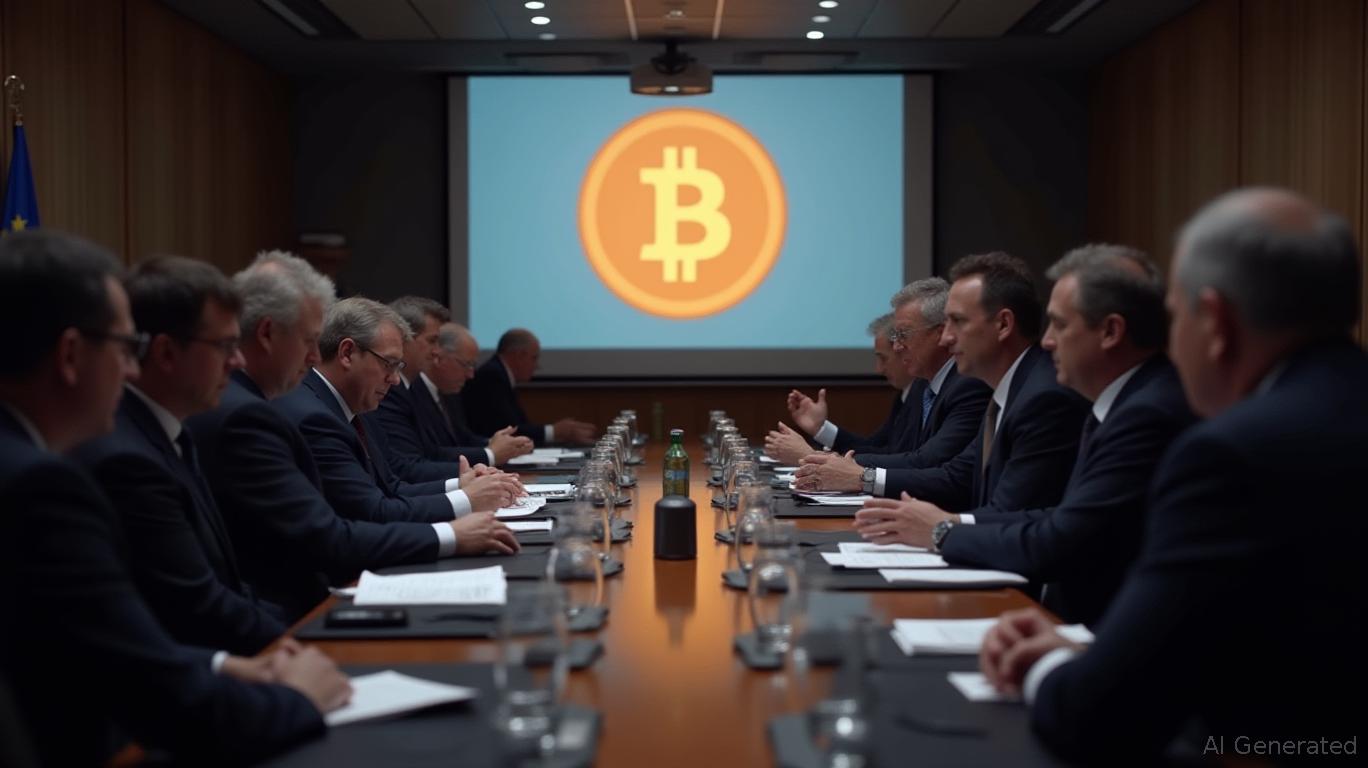Bitcoin Updates: France Challenges ECB, Supports Bitcoin Amid EU Rules Restricting Stablecoin Growth
- USDC's $76B supply growth driven by Circle's ClearBank partnership, enabling instant EUR-to-stablecoin conversions under MiCA-compliant audits. - EU regulatory clashes between MiCA and PSD2 double compliance costs, risking stablecoin adoption as France rejects ECB's digital euro in favor of BTC and euro-stablecoins. - DeFi platforms boost USDC liquidity via cross-chain integrations, but fragmented infrastructure across 15+ blockchains creates interoperability challenges. - France's 2% BTC reserve proposa
USD Coin (USDC) has reached a circulating supply of $76 billion, propelled by key alliances and multi-chain expansions that highlight its significance as a foundational element in the worldwide crypto ecosystem.

At the same time, regulatory ambiguity continues to affect the EU’s stablecoin industry. Conflicting requirements between MiCA and the Payment Services Directive (PSD2) have imposed additional compliance challenges, forcing companies to secure two separate licenses for stablecoin custody and transfer operations. Circle’s EU policy head,
France has taken a decisive approach in this environment, with legislators rejecting the European Central Bank’s digital euro initiative and instead supporting
Decentralized finance (DeFi) platforms are also influencing the evolution of stablecoins. Bybit’s adoption of native USDC transfers on Hedera’s blockchain has increased liquidity on the ESG-oriented network, with inflows rising by 25% after the announcement, as previously reported by ABC Money. Likewise, Solana’s network recently saw $750 million in USDC minted, leveraging its high-speed capabilities to support DeFi and NFT markets. However, the stablecoin landscape remains fragmented. By late 2025, USDC is available on over 15 blockchains, while USDT operates on eight, creating interoperability issues that complicate cross-chain transfers and liquidity management—a challenge discussed in an .
The so-called “stablecoin bridge problem” has become a significant challenge. Recent research has shown that having multiple token contracts for a single stablecoin—such as wrapped tokens or chain-specific versions—splits liquidity and raises security concerns. Solutions like intent-based bridging, where users define their transaction objectives without manually choosing transfer routes, are gaining popularity. Protocols such as Across are working to unify these processes, allowing for smooth cross-chain transfers while hiding technical complexities, as explored in detail in the Across blog.
As stablecoins see wider adoption—from remittances in high-inflation countries to use in institutional treasuries—the sector stands at a crucial crossroads. While regulatory progress and technological advances are fueling expansion, unresolved issues around interoperability and compliance threaten to fragment the market. With USDC’s market capitalization approaching $76 billion and DeFi platforms testing high-yield offerings like MEXC’s 600% APR BTC rewards, a .
---
Disclaimer: The content of this article solely reflects the author's opinion and does not represent the platform in any capacity. This article is not intended to serve as a reference for making investment decisions.
You may also like
Seize the opportunity of the crypto market rebound: Easily earn $4,000 per day through compliant mining with CryptoEasily

Bitcoin News Update: BlackRock's $506 Million Withdrawal from Crypto and Controversy Spark Market Crash Concerns
- BlackRock's $506M crypto sell-off, including 6,400 BTC and 48,800 ETH, triggers panic over liquidity risks and short liquidations. - Bitcoin ETFs lost $519M in assets this week, with BlackRock's IBIT leading exodus amid institutional redemptions and HPS fraud scandal. - Market volatility intensified as Bitcoin nears $109,287 threshold, risking $3B short squeeze and destabilizing ETF ecosystem. - Regulatory scrutiny grows over BlackRock's due diligence failures, compounding crypto's credibility crisis des

Bitcoin News Update: Japan’s Bitcoin Mining Network: A Digital Solution for Managing Excess Power
- Japan leverages Bitcoin mining to stabilize its grid via Canaan’s 4.5 MW hydro-cooled servers, dynamically balancing load through real-time algorithms. - The state-linked project marks Japan’s first public grid-integrated mining initiative, aligning with global peers like Canada and Bhutan to monetize surplus renewable energy. - Regulatory reforms reclassify crypto assets and introduce a 20% capital-gains tax, signaling Japan’s push to integrate digital assets into energy and financial systems. - Canaan

Stellar News Today: Stellar’s Collaboration with Chainlink Sets the Stage to Dominate the $2 Trillion DeFi Tokenization Trend
- Stellar integrates Chainlink's CCIP and Data Feeds to enhance cross-chain interoperability for institutional DeFi, aligning with its RWA expansion strategy. - The partnership enables seamless token transfers and atomic operations across blockchains, addressing critical DeFi infrastructure gaps as tokenization markets surge. - Stellar's Q3 2025 RWA volume hit $5.4B with 700% smart contract growth, positioning it to compete with Ethereum in institutional-grade blockchain adoption. - Chainlink's $100B+ TVL
